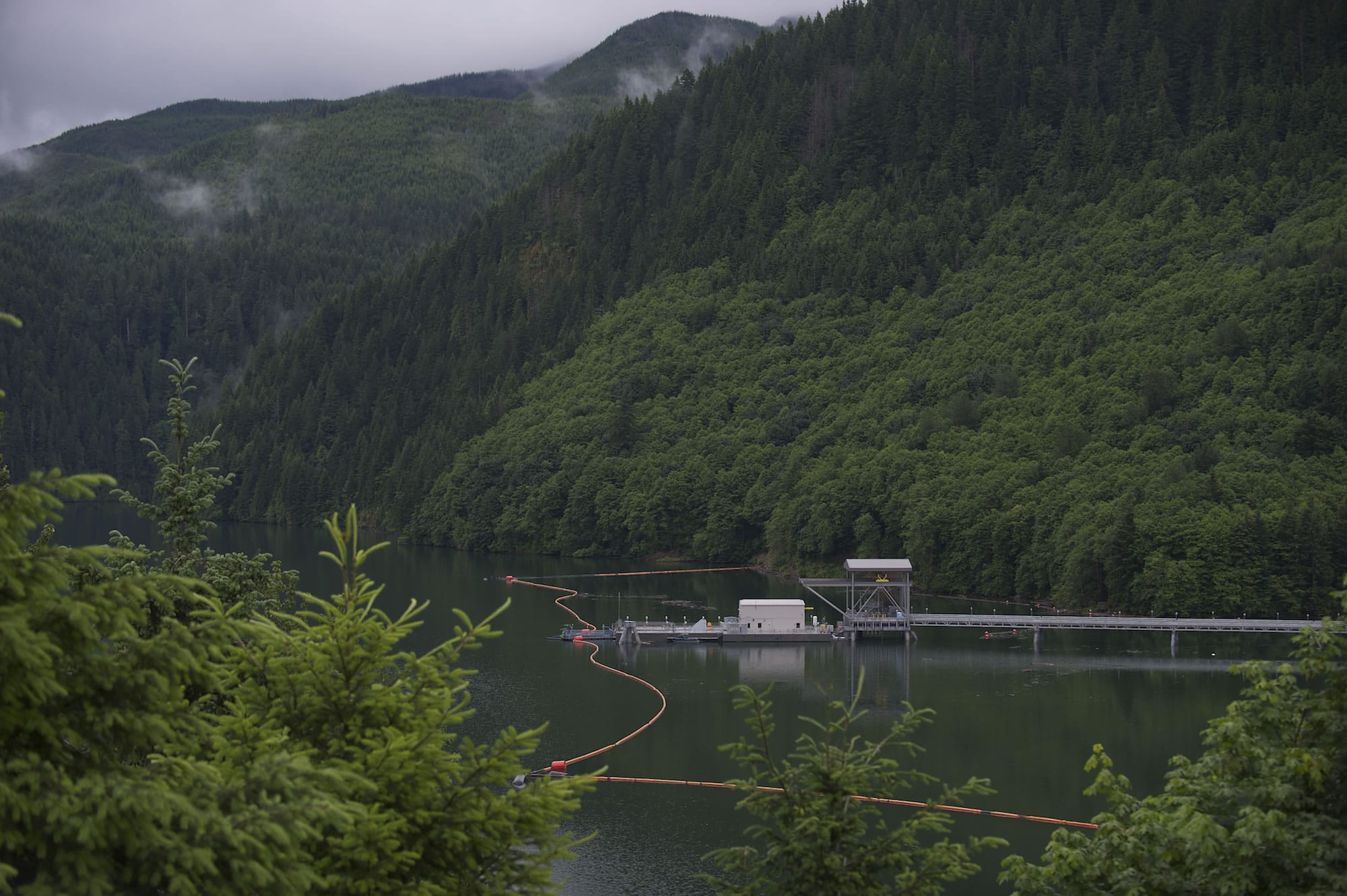State, tribal and federal fishery officials, along with PacifiCorp, will decide in the next month or two whether to suspend temporarily efforts to rebuild a population of spring chinook salmon in the North Fork of the Lewis River upstream of Swift Dam.
Here’s their conundrum: Very poor spring chinook returns to the North Fork of the Lewis River have left the state Department of Fish and Wildlife with only about 430,000 young spring chinook for release this fall.
According to Erik Lesko, an aquatic biologist with PacifiCorp, the hatchery system on the North Lewis has a target of 1.25 million young spring chinook for annual release downstream of Merwin Dam and 100,000 for release in the upper North Fork Lewis, plus the Muddy River and Clear Creek, two tributaries.
Young spring chinook are released in the three locations in the upper watershed, then migrate downstream where they are captured by a floating surface collector at Swift Dam. Then they are trucked to Woodland for release in the lower Lewis River to continue their journey to the sea.
Members of the Lewis River Aquatic Coordination Committee last week discussed whether or not to plant 30,000 or so of the available spring chinook in the upper watershed or, given the small number of fish available, suspend the restoration effort and release all the young chinook downstream of Merwin Dam.
The committee is a monthly meeting of PacifiCorp, state and federal fishery agencies, the Forest Service, Cowlitz PUD, Indian tribes and others involved in Lewis River management under the 2008 federal license for Merwin, Yale and Swift dams.
About 5 percent of the young spring chinook released in the upper North Lewis watershed get captured at Swift Dam and taken downstream, said Chris Karchesky, a senior biologist and fish passage coordinator for PacifiCorp.
“My initial thoughts are to maximize the broodstock (downstream of Merwin),’’ said Pat Frazier of the Washington Department of Fish and Wildlife. “That’s how we fuel the reintroduction upstream.’’
The agency has shifted to fall releases of spring chinook, rather than in the spring, to try to boost returns. A meeting with salmon experts and the operators of Cowlitz Salmon Hatchery is planned with and eye to improving the situation in the Lewis.
“We’ve got to figure out what we can do to do a better job for the spring chinook,’’ Frazier said. “Whatever it takes, that’s what it takes.’’
Even if no spring chinook are released in 2017, there still likely will be some production out of the upper Lewis River watershed.
Karchesky said some of the young spring chinook released in the upper watershed take up residency in 4,500-acre Swift Reservoir, survive to maturity and spawn, even as landlocked salmon.
Their progeny still have the anadromous instinct and are captured at the Swift collector for movement downstream.
“We’re getting a different kind of production out of those fish that we did not expect,’’ he said. “We won’t know how many of those come back for a couple of years.’’
Members of the federal fishery agencies and Yakama Indian Nation were not on the conference call, so no decisions were make by the Aquatic Coordination Committee.
Frazier said a decision is needed by May so any fish released in the upper watershed can be tagged.




